Written by
Xiao is the Global Head of Lead Generation at Brightpearl, a leading retail operations platform. She is passionate about setting up innovative strategies to grow sales pipelines using data-driven decisions.


Don’t have a Reach account? Sign up here
Don’t have a Performance account? Sign up here


Tips & Guides — 10 Nov 2025
Marketing Strategies for Retail
While the retail world has changed dramatically thanks to the internet and the growth of digital media, physical stores still remain important. Ecommerce accounts for almost 20% of retail sales, which means brick-and-mortar stores are still where the real money’s at.
Businesses need to find the perfect balance between online and offline marketing, which can be a challenge. Don’t worry – we’re here to take you through all the top tricks and tips to both in-store and online marketing.
Let’s start with exactly what retail marketing is. Put simply, retail marketing includes all the tools and marketing efforts that you use to attract customers in a consumer-driven marketplace. Strategies can include:
All these need to be supported by effective pricing strategies and exemplary customer service. Your sales and customer support staff are central to an effective retail marketing strategy – there’s a consistent trend of consumers severing relationships over poor service, as seen below:
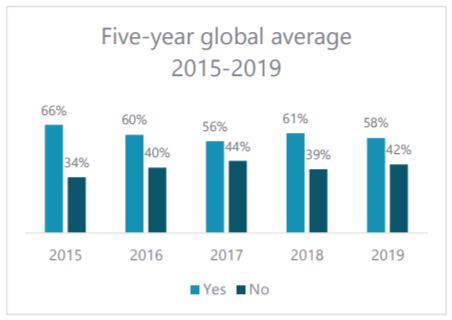
Other important factors include the location of your marketing, and the design of your store – retail marketing is highly dependent on aesthetics and design of your retail space as well.
In general, retail marketing is all about motivating customers to come to their online stores or physical stores and make a purchase. There’s a focus on improving the bottom line, boosting sales, and increasing foot traffic. However, not all campaigns are about new customer acquisition. Many focus on customer retention too.
Marketing your retail business to customers while they’re in a physical store is called in-store marketing. Your target potential customers who have already entered your retail store and engage with them to convert them into buying customers. In-store marketing can help you with the following:
In-store marketing has one key advantage: a captive audience. You don’t need to persuade them to come to your store. Instead, you just have to persuade them it’s worth making a purchase.
Not all marketing tactics have to be obtrusive, either. Simple tricks like offering free wi-fi can create a pleasant experience (with the added benefit of being a great way to capture customer data!).
With this in mind, what are some concrete tactics you can employ to increase sales in a physical retail store? Let’s take a look at some techniques – both in-store and online.
These days, people tend to search online before heading out to a store. Whether they’re checking a particular product’s availability or simply the opening hours, they’re likely to turn to Google. That means you need to be on the first Google search page for your keywords.
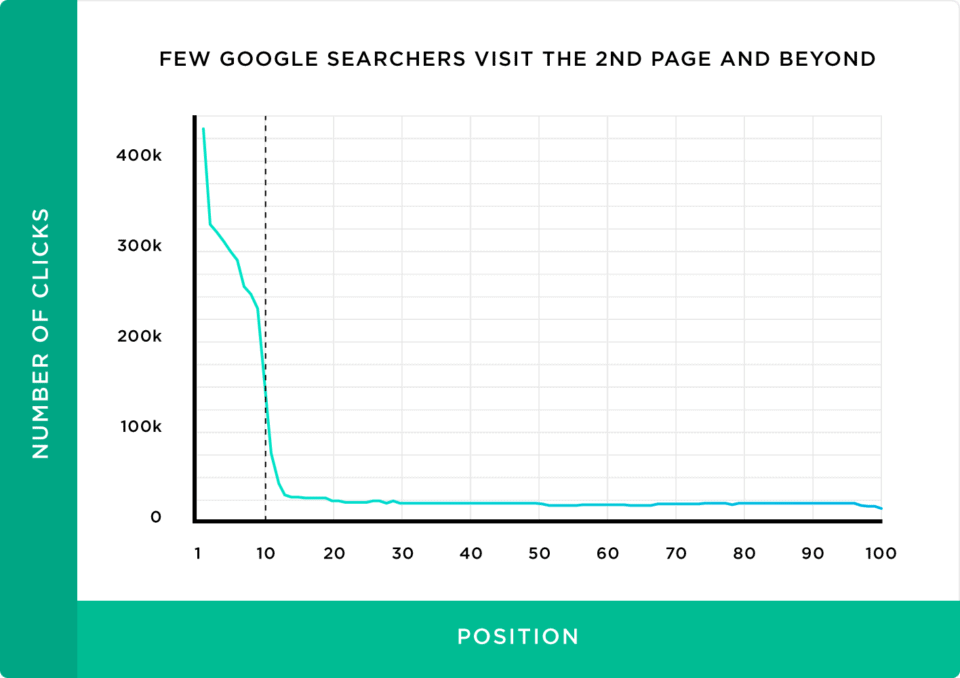
Search engine optimization (SEO) isn’t simply a buzzword – it’s a vital marketing tool, both online and offline. If your competitors are showing up on that search page and you’re not, that is where your customers are going.
One way to improve your rankings is to focus on long-tail keywords. These are short phrases, often three to five words in length, and they’re much easier to target than single words.
So, if you’re a womenswear brand, don’t focus on words like ‘dress’ or ‘skirt’. Instead, be specific. Think about your star products, and how to describe them. Some examples could include:
Ranking for long-tail keywords is not only easier, it’s often a better marketing strategy too, since you can target customers’ needs.
Of course, no amount of great marketing will make up for bad products. Your products need to be high-quality, attractive, and relevant. It’s important to make packaging captivating as well. Some key things to consider when designing or purchasing products include:
Many customers are prioritising environmentally-friendly options, with between 60 and 70% of consumers stating they would be willing to pay more for products in sustainable packaging. Staying on top (and ahead) of current trends is key to picking the right products.
Mobile traffic is around half of all internet traffic, meaning you need to factor it into any plans you make. One reason for this popularity is that it means you can access anything, from anywhere – including ordering from stores.
There are a few ways you can implement mobile ordering. Firstly, it easily facilitates a “buy online pick up in store” system. Customers can make the purchase on their phone, and then use their phone as the receipt for pickup, creating a smooth and cashless transaction that saves both them and your staff time.
Another option many stores have started using is contactless shopping. Sainsbury’s recently implemented ‘pick up and go’, a solution by which you can scan barcodes through a phone app, pay through a linked card, and then simply scan a QR code to leave. This blend of the in-store experience with the ease of ecommerce has proven incredibly popular for them, with 30% of sales coming through the app (double what it was the year before).
Adding delivery to mobile ordering can be potentially rewarding as well.
As we mentioned earlier, customer service is an important aspect of in-store marketing. Invest in your staff and their development, as they’re the ones doing the selling and acting as the face of your brand.

As a business owner, start by hiring smart, passionate individuals who demonstrate excellent customer experience skills – but don’t stop there. Train them to create personalized in-store shopping experiences, help them grow familiar with your stock, and encourage them to grow their skillset. By investing in your staff, you can boost sales and increase customer satisfaction, as well as reducing employee turnover.
Your sales targets need to be easy to track, reasonable, and have set timeframes. There’s a great acronym for this: SMART.
They should be challenging enough but still achievable. If they’re too high, you risk demotivating your team and if they’re too low, you’re not utilizing your complete potential.
Make sure to invest in the right tools to help you gather data – for instance, if you’re running an affiliate marketing campaign, you’d want to use affiliate tracking software to monitor sales targets regularly to ensure your team is on the right track. Equally, having access to metrics from your point of service like average order value (AOV) can help you keep an eye on your goals.
Take advantage of having a physical space that you control. Other than your storefront, it’s important to extend your visual marketing to displays inside your store. Use lighting techniques, imaginative displays, and eye-catching merchandising techniques to attract buyers.
Make sure your in-store décor and product placement engages all the senses and creates an energetic atmosphere. Your stores should be an extension of your brand – no plain white walls and sparse shelves (unless minimalism is your thing). And, with the rise of influencers around the world, the more Instagrammable your displays are, the better.
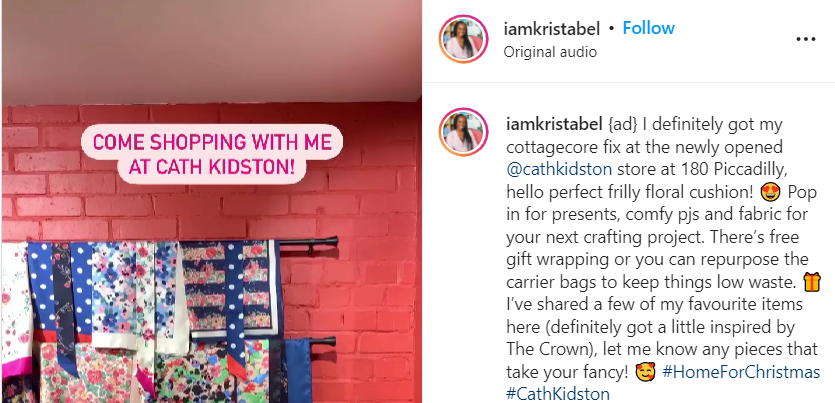
As a customer-centric business you should reward loyal customers. In a competitive world where they have a myriad of options, loyalty programs help you retain customers (which is great, because a retained customer is often more profitable than a new one).
Loyalty programs have shown an increase in sales and revenue, because they incentivize shopping at your store in return for a discount or a gift. They can also improve customer engagement, build brand affinity and create brand advocates out of your customers.
If you do offer a loyalty scheme, make sure it applies both in-store and online. You can have a unique card they can scan in store, linked with a membership number they can attach to an online account. That way, customers won’t be tempted to restrict themselves to just one platform in order to reap the benefits.
While the in-store experience still involves manual customer service, that doesn’t mean you can’t embrace automation. You can automate your retail sales by investing in a CRM (customer relationship management) solution, and automatically contacting customers who haven’t shopped in a while. You can also use this to sell existing customers upgrades or ancillary items to something they just bought.
Automating order management and order fulfillment is necessary as well because it eliminates manual work. Manual Shopify order fulfillment can be prone to errors and inaccuracies, whereas an automatic system ensures everything will run smoothly.
Think about how you might upsell or cross-sell in your ecommerce store – you’d promote similar products on the product page. You can do the same in-store too, putting similar products together, or adding eye-catching offers in related sections.
The checkout point is an excellent tool here, too, as it’s great for impulse purchases. ‘Add-on’ products like batteries are well-worth displaying on the checkouts themselves, and a great way to boost your AOV.
Your return policy can be one of your most important assets. While product returns are an unavoidable headache, especially for a small business, you can use your return policy to enhance customer loyalty. That will ultimately translate to more profits.
A transparent and lenient return policy leads to fewer returns and more sales. A strict policy is often a deterrent because customers might consider it a risk to buy from someone who makes returns difficult. By allowing online customers to return in store (and vice versa), you increase the convenience of a return – and make a purchase that bit more tempting.
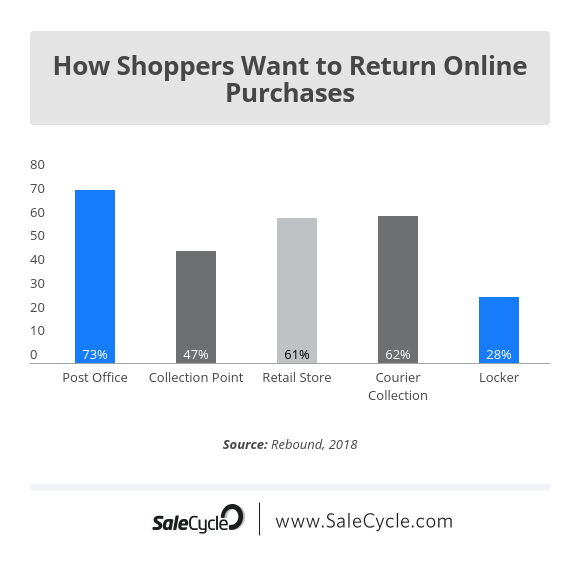
Of course, you also want to drive sales in your ecommerce store – while the majority of retail sales might take place in physical stores, that 20% we mentioned earlier looks set to keep growing. Here are some key marketing strategies to boost your online sales:
There are over 5.6 billion Google searches every day, and almost 63,000 searches every second. It would be foolish to ignore Google as a medium to reach out to your customer base. Google is a shopping guide. It helps people find product reviews, search for store locations and even helps people shop online.
A google shopping campaign shows users detailed information about your products before they even click on your ad. The information includes a picture, price, store name and description. It can be more effective than a simple text ad, and starts the shopping experience for your ecommerce store right at the search engine results page.
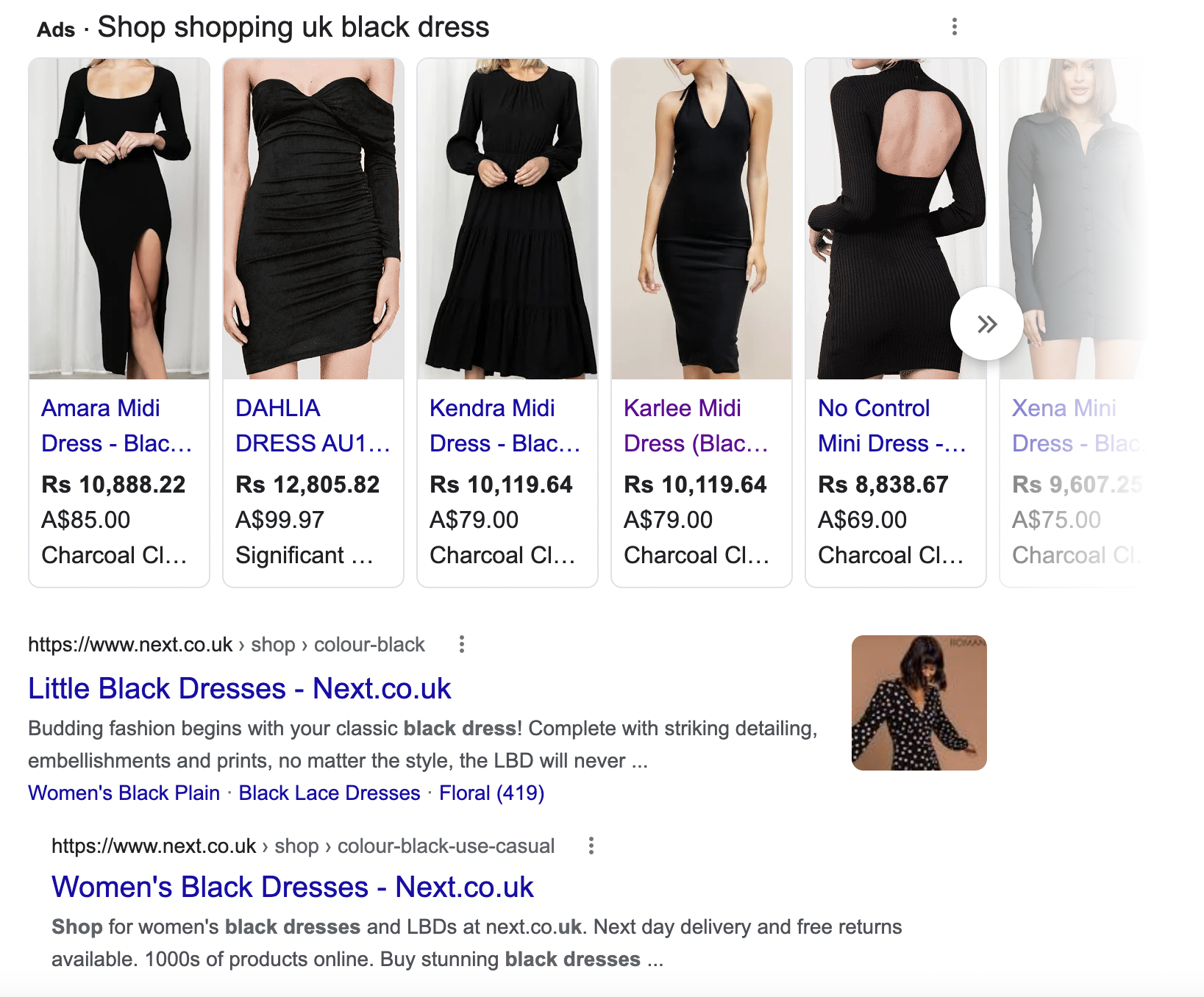
People shop online for the convenience of it, but it can be lacking some of the joy of the in-store experience. You can’t find a helpful sales assistant in an aisle, or physically touch items. If you want people to visit your ecommerce store, you have to give them a few reasons to do so. The best reason is your amazing product range, but you should go beyond that. Consider:
Word-of-mouth referrals remain hugely important, with 90% of people trusting brands that have been recommended to them. This is the age of influencer marketing and affiliate partners, so investing in a solution like Affise Reach is a great way to build a network of partnerships that can provide that word-of-mouth marketing.
Social media allows you to show your ads to the key demographic that your ideal customer belongs to. Whether you invest in Facebook, Twitter, LinkedIn ads, or another platform, you can target who your ads will be shown to by filtering the audience according to their gender, location, age, likes, dislikes, etc.
Leverage social media to ensure your advertising spend isn’t wasted on people who aren’t likely to buy from you. If you have a local business that can only deliver within the city and you sell dresses for women aged 24-40, social media targeting can help show your ad to women of that age within your desired zip code.

Customers will buy a new product they haven’t bought before if it is the answer to their needs. Remain relevant by ensuring your product range caters to your customers’ pain points. If you’re going to buy into current trends, make sure you’re ahead of the curve – you don’t want to be one of those stores desperately trying to offload hundreds of fidget spinners a year after that trend peaked!
Relevance isn’t just limited to your products or services but also your marketing copy and imagery. By crafting content that your target customers identify with, you can become relevant as a brand, rather than just having relevant products. For instance, if you’re a beauty brand, you want to be the place your customers come to for tutorials – not just purchases.
As well as these more traditional tactics, embrace unconventional methods.You can engage with prospects outside the digital world in public places like shopping malls, beaches, parks, concerts, sporting events, festivals, etc. Creativity is of utmost importance. You could simply sponsor an event or open a pop-up shop on the beach. The point is to grab the public’s attention and increase brand awareness.

41% of Americans have listened to a podcast in the last month. Podcasts are a growing industry and there are a thousand niche industries to choose from. You can find one that aligns with your brand and run advertisements during the commercial breaks.
Some podcasters are quite influential and can help share your message. Affiliate marketing whether in social media or the podcast industry, is an incredibly effective way to reach your audience and drive sales. Rather than having a standard paid ad spot, getting podcasters to talk about why they like your product is a great way to promote your brand to their audiences.
Your content strategy should ensure that your customers find you interesting. A well-rounded and inclusive content strategy should include video – 54% of customers want more video content!
That said, you can’t just churn out anything. Gather your data with a tool like CPAPI, work out what your audience wants and where they want it, and start planning. Make your videos creative, relatable, and on the right platform. Are your leads all on TikTok? That means short form, attention-grabbing content. Or do they prefer Youtube? If so, you need something a little longer to get the algorithm’s attention.
Holidays make people happy. The more holidays you celebrate, the more chances you have of drawing in customers. Plus, it gives you the chance to expand your market in a way your competitors might not. For instance, imagine you’re a card and gift store. Every card store sells Christmas cards – but how many have a section for other holidays in the same month, like Hanukkah?
There are many holidays that don’t make it to the calendar but they need to make it to yours. Think about all those weird ‘holidays’, like Pi Day (that’s March 14th). Take advantage of these – host giveaways or have themed contests and offers to increase excitement and drive traffic to your retail store.
Want a high converting landing page? Then your marketing copy and imagery need to fuel a sense of urgency. It needs to make your customers think they should buy now rather than later. The best way to do this is to make discounts and promotions time bound. Tempt shoppers to make a purchase immediately because come tomorrow, this great deal that you’re offering will certainly expire.
You don’t need to rely on store banners and pop-ups ads here, either. SMS and email marketing are great ways to inform customers about promotions that run for a limited time.
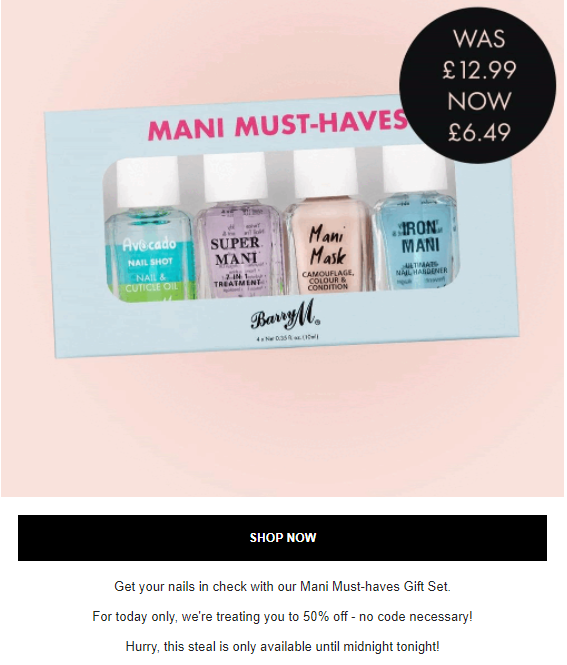
Retail sales aren’t the same every month. Depending on what you sell, you’ll likely have peak periods, as well as times with less sales. You don’t want to be caught short on stock, so make sure you plan in advance. After all, as a customer, there’s nothing quite as disappointing as being tempted in by an advert only to find the item all sold out!
Your competition is also likely to bring their A-game during the peak times, so make sure to have a strategy in place for your ad spend. Improving your SEO well in advance of the peaks means you’ll come top of the search results, and leave them playing catch up.
We mentioned earlier that retaining customers is always cheaper than attracting new ones. Customer acquisition is expensive, so take advantage of tactics like remarketing to increase your customer retention rates.
The first step to smart remarketing is to have a comprehensive database of customer information – you can use tools Affise BI to manage unstructured data from various marketing channels effortlessly. With this in hand, you can figure out the best methods of approach, whether through email, cold calling, or targeted social media advertising to engage them again.
Your storefront is one of the best assets you have – an appealing, exciting display can be a form of advertising that helps customers retain your name at the back of their mind. When they find you on Google or Facebook, they’ll remember just how creative your shop displays were.
Of course, you need to consider your ecommerce storefront too. Make sure you change to match the seasons, highlight your best products, and draw them in with interesting content. Just like physical stores are designed to lure you to the checkout, an ecommerce store should tempt you all the way to the online shopping cart.
It’s not just aesthetics, either. An impressive ecommerce storefront would account for user interface (UI) and user experience (UX) in terms of website loading speed, navigation, content, SEO visibility and mobile optimization.
Employees can be your best marketeers. No one knows your product like they do and if they’re trained well enough, no one can make a sale as well as them. We’ve mentioned the importance of your in-store staff, but the same applies to your remote customer service team too.
Live chat on your website and social media pages is one of the most impactful ways to engage with prospective customers. Customer service staff needs to be trained on using live chat effectively. They should understand the ins and outs of every social media platform, and be equipped with a great omnichannel solution that they’re confident using.
It’s not just excellent training your employees need – when you offer employees incentives and compensate them fairly, you will find them to be more enthusiastic and high performing. If you want customer facing employees to help create exceptional impressions on your customers, ensure your team is motivated and enjoys working for you.
Consider your employees to be your brand ambassadors and create a positive working environment that keeps them committed and customer oriented.
A smart pricing strategy can be a powerful growth driver. You need to tweak your pricing often to stay ahead of competitors and in the face of changing consumer trends and tastes. Whatever you do, your prices must still bring in a substantial profit.
You could also consider value-based pricing, where your price is based simply upon the value your customer puts on your product and what they’re willing to spend. The key is to ensure you’re not charging so much that customers are put off, but so little that they discount you as a cheap, unappealing option.
It’s not enough to appeal to your customers – you have to engage with them. Whether through social media chatter, influencer marketing, open feedback forums, or other methods, keep an open presence.
Traditional advertising doesn’t engage with customers. It shows your content and shouts out your brand name. However, responsive social media advertising and influencer marketing does. You (or your partners) can talk with your target audience, learn their likes and dislikes, and find out just what they want from you.
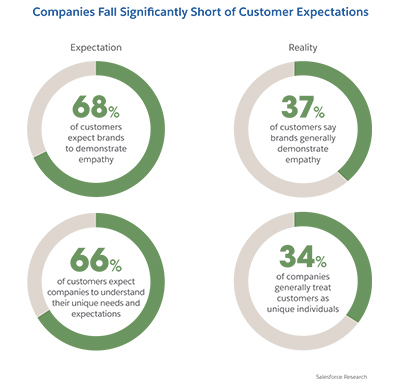
When you’ve got both an in-store and online presence, you need to make intelligent decisions about which marketing strategy will suit your brand. Retail is a tough business but if you remember to focus on customer satisfaction, you will find your business grows in awareness, popularity and eventually profits. The key is to test these methods out, figure out what works and move ahead from there.
If you really want to increase your impact, it’s time to invest in affiliate and influencer marketing. Consider platform migration of your affiliate programs to Affise for an intuitive and easy-to-understand solution. Make sure you have a presence on the key social media platforms for your audience, and that your ecommerce store links with your physical one.
Remember:the above tactics can work wonders, but only if you’re consistent.

Written by
Xiaoyun TU
Xiao is the Global Head of Lead Generation at Brightpearl, a leading retail operations platform. She is passionate about setting up innovative strategies to grow sales pipelines using data-driven decisions.
Stay on top of the competition. Let us keep you updated with news, insights, and more



